Revealed: How police busted the state’s largest meth importation
Intimate details of a covert surveillance investigation that resulted in three bikie associates being jailed over SA’s biggest methamphetamine haul have been revealed by Federal Police.
Police & Courts
Don't miss out on the headlines from Police & Courts. Followed categories will be added to My News.
Surrounded by a team of armed police, John Farrelly knew the game was up.
As he wisely raised his hands skyward, he muttered just two words to the STAR Group operative who had his eye – “oh f**k.’’ Seconds later, his face would meet the dusty, black earth as he was secured.
Farrelly’s luck ran out on an isolated property at Bowhill, 100km east of Adelaide, when he was caught red-handed with what he thought was 112kg of methamphetamine that had been cleverly smuggled into Australia.
Unbeknown to Farrelly and his two associates – John McInerney and Aidan Nelson – the multimillion-dollar shipment had been intercepted by authorities and the methamphetamine substituted with an inert substance.
That in itself was not unusual. In the fight to stop organised crime syndicates importing vast quantities of drugs into Australia authorities use a myriad disruption methods. They include intelligence sources and physical surveillance, often targeting containers arriving from high-risk locations or linked to individuals associated with known organised criminals.
Often, the quantities involved are relatively minor and the concealment method fairly crude. But not in this case. It was significant not just because of the quantity – it was the largest shipment into SA at that time – but also its purity and the intricate method used to hide it.
While those now behind bars over this shipment are only foot soldiers, the leaders of the organised crime syndicate responsible – which is closely linked to SA’s Descendants outlaw motorcycle gang – are still the focus of investigations locally and overseas.
Australian Federal Police SA detective acting Superintendent Rodger Braun said the source of the methamphetamine and organisers of the huge shipment was still being investigated.
“To organise an importation of this scale, you have to be a well-resourced, well-connected and sophisticated organised crime group,’’ he said.
“Forensic tests revealed the methamphetamine seized to be the purest form of the synthetic drug. This indicates that the shipment had been sourced at the highest level of the commercial process and had not yet been modified or cut with other substances.
“We know outlaw motorcycle gangs are closely involved in the importation and distribution of methamphetamine and other illicit drugs into South Australia and nationally.’’
The shipment arrived by sea in Melbourne on April 6 2017 in a shipping container from Malaysia. It contained the airframe of a Piper Warrior aircraft, which the manifest stated had a value of just $2,972.56. The airframe was mounted on an elaborately constructed transport stand. It was addressed to a legitimate business at Yarrawonga Airport, just inside the NSW border in Victoria.
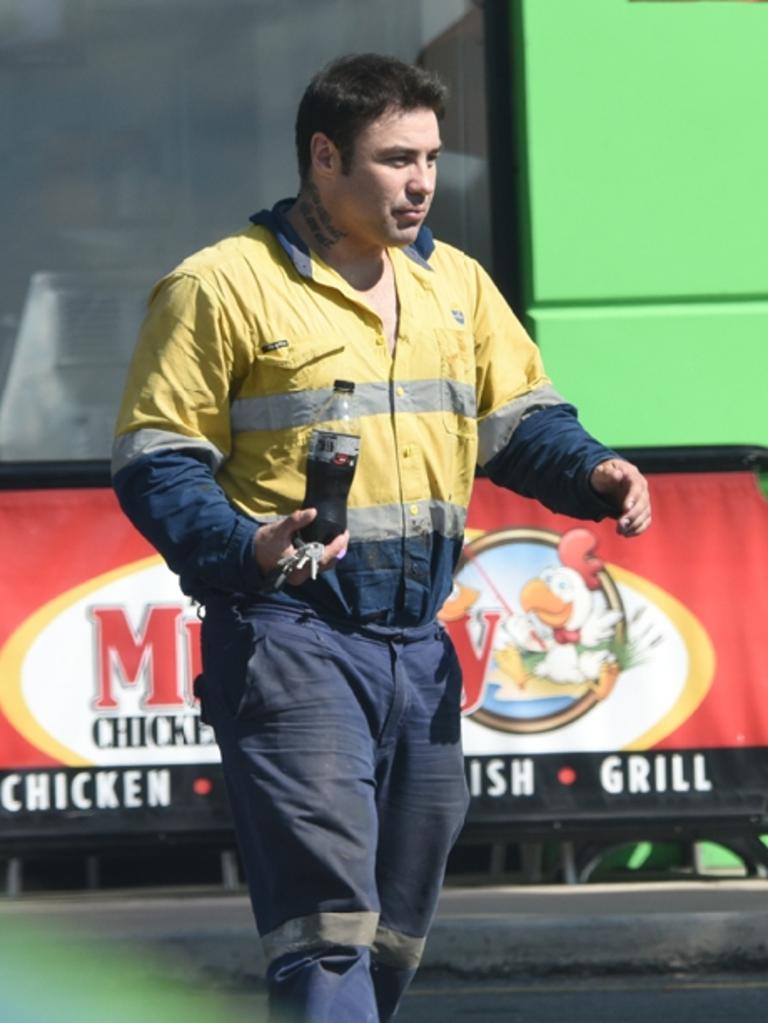
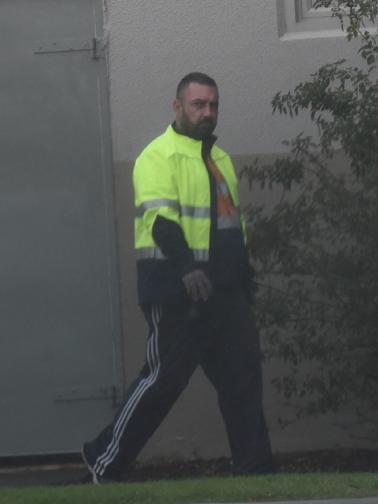
The container was X-rayed at the Australian Border Force facility in Melbourne and after anomalies were identified, the transport stand was diverted for a physical examination. ABF officers used a drill to penetrate one of the seven cross beams of the stand and a white powder was located.
Between April 11 and 13, AFP and ABF officers deconstructed the stand and located 91 silver foil bags of methamphetamine hidden within seven beams of the stand. Weighing 112kg, the drug had a street value of up to $56 million.
Clearly a highly organised operation, the transport stand had been constructed for the sole purpose of importing drugs.
“The whole structure has been designed with one purpose,’’ Detective acting Supt. Braun said.
With the drug safely out of play, the job of apprehending those behind the importation was just beginning. In a carefully monitored controlled delivery, police replaced the methamphetamine with an inert substance – and installed listening a tracking devices within the beams before carefully welding them closed, spray-painting them and reassembling the stand.
The investigation, dubbed Operation Bioko, would involve dozens of Federal agents, surveillance operatives and SA police specialists. It would covertly track the shipment almost halfway across the country, from Yarrawonga to the remote SA property.
But even before that started investigations were underway to identify which syndicate was responsible and the likely suspects. It is fair to say police were not terribly surprised when they discovered the trio – known associates of an organised crime group – were involved.
The delivery operation started at 4pm on April 20 when McInerney, 39, arrived at Yarrawonga airport and loaded the transport stand into rear of his light truck. He gave the business owner, who recognised him from previous visits to collect identical stands, a delivery note and $1,000 cash. The owner is not connected to the syndicate’s illegal activity. After leaving the premises McInerney headed west along the Murray Valley Highway.
It took Nelson, 32, driving his white Ford Falcon utility, just 14 minutes to catch up to McInerney’s white truck. The pair then drove in tandem along the highway to Swan Hill, where they spent the night at a motel.
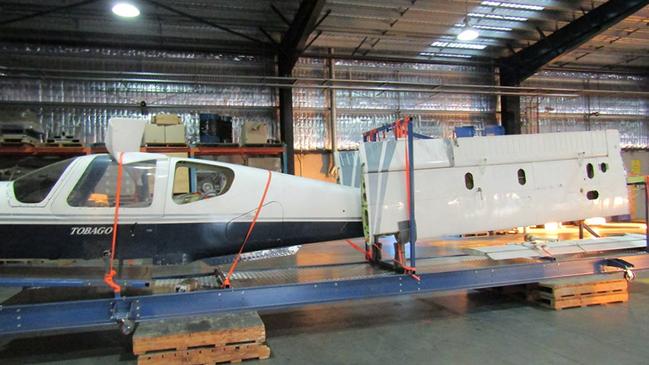
Perhaps fearing they were being tailed – or just being ultra-cautious – the pair conducted counter-surveillance while driving west. This would involve McInerney stopping his truck and Nelson’s utility driving another 500 metres along the highway and stopping while McInerney would walk once around his truck before driving off and Nelson slotting back in behind him.
“They were looking to see if any other cars had quickly pulled over or were doing a U-turn, anything unusual,’’ acting Supt. Braun said.
A second method would involve McInerney driving into a truck stop slowly, Nelson slowing right down on the highway and then McInerney pulling out onto the highway again with Nelson catching up. Once again, it was designed to see if any other vehicles changed their behaviour.
“For us this was just business as usual because our people are trained for this, but there were considerations we had to take into account,” det acting Supt. Braun said.
At 5.59am on April 22 McInerney and Nelson left Swan Hill and drove in tandem to the remote Salt Pan rest stop at Piangil, 100km west of Mildura in Victoria. Parking their vehicles at the furthest point of the rest stop, both then entered the cargo hold of McInerney’s truck. Between 7am and 7.53am the pair used various power tools to separate the beams containing the shipment from the remainder of the transport stand. The seven beams were then transferred to Nelson’s Ford utility. During this process, one of the men said “this is the crucial part, parting these ones.’’
Just after 7.53am the pair left the rest stop with McInerney driving directly to his stepfather’s property at Lower Light, just north of Adelaide, where he left his truck containing the remainder of the transport stand and departed in a Mazda sedan.
Nelson drove his Ford utility, which contained the seven beams and what he thought was the methamphetamine, and headed to Noa No Landing Road at Mannum, east of Adelaide, via Pinnaroo and Murray Bridge.
At 12.27pm that day Farrelly, 36, drove his Nissan Navara utility along that road and followed Nelson for a short distance before both vehicles stopped. Between 12.28pm and 12.34pm the pair transferred the seven beams into the tray of Farrelly’s utility.
At 12.36pm Farrelly left that location and drove to a remote property at Goondooloo Rd at Bowhill. The property is owned by a family trust controlled by a well-known senior member of the Descendents outlaw motorcycle gang. The property title lists the man’s wife as the beneficial owner of the property.
Investigations have revealed two of the couple’s sons – who are also Decendents members – travelled overseas with Farrelly and McInerney to Indonesia the previous June.
Once at the Bowhill property Farrelly drove to an area of scrubland near an abandoned house where he used an angle grinder to open three of the beams and remove the silver bags containing the substituted contraband. He then placed them in metal drawers hidden in a purpose-built, concealed compartment behind the tailgate of his utility. He then welded the empty beams shut and spray-painted the finished welds to conceal them. He then buried the four unopened beams that still contained the remainder of the shipment, presumably for later collection.
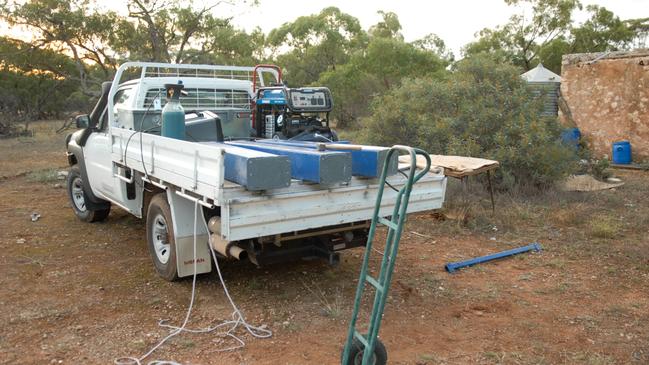
Unaware his every move was being observed by police, Farrelly had just completed his task when the STAR Group officers made their presence felt.
Several hours later police arrested McInerney at a house in at Salisbury. A search of his Mazda located $7,000 in cash and a further $22,900 in his house. Encrypted telephones were also found with McInerney refusing requests for passwords.
Aidan Nelson would have a few more hours of freedom before he, too, was arrested. At 2.26am the next morning he called a Yellow Cab to his house in Giradof St at Paralowie. Surveillance operatives followed him to Adelaide airport and watched him pay the cabbie and proceed to a bench adjacent the closed International arrival hall. He had just sat down when he was detained.
When police searched his backpack they found two encrypted BlackBerry devices and a third mobile phone containing the number of the individual in Malaysia who had sent the shipping containers. It also contained his passport and several outdated boarding passes for intra-Asia travel. He had not booked a flight out of Adelaide. No doubt aware through the underworld grapevine that his two colleagues had just been arrested, he was out of options and his intention was clear.
Both Nelson’s utility and McInerney’s white truck also contained GME VHF radio handsets, tuned to channel 8. Obviously well aware police had the capacity to intercept their mobiles phones, the pair used the VHF radios and the encrypted Blackberry’s to communicate during their intrastate convoy.
While the AFP can’t confirm it, they believe the syndicate used the same method of importation on multiple occasions before it was discovered, presumably containing methamphetamine on each occasion.
Border Force investigations have revealed the same individual in Malaysia sent to the same business at Yarrawonga airport four aircraft shells, mounted on identical stands, between November 24 2016 and March 1 2017. While each of the consignments was X-rayed at the time, they were released because anomalies in the frames were not detected at the time. Retrospective review of the images identified the consignments each had anomalies in the same parts of the transport stand.
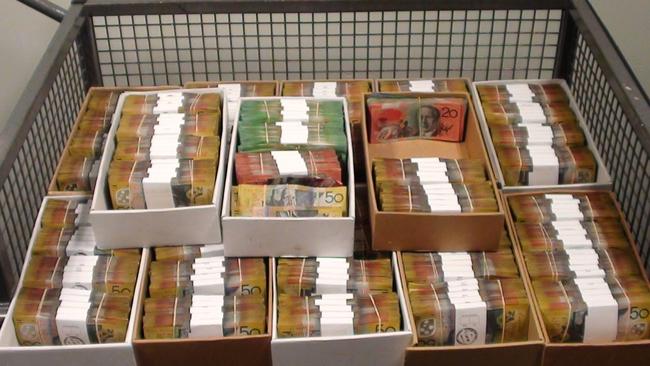
Not surprisingly, the same transport stands were being used to smuggle cash out of Australia to the man sending the consignments to Yarrawonga.
On April 12 – while the transport stand was being disassembled by authorities and the drug substituted – ABF officers examined another container that had been lodged for export to Malaysia. It contained an aircraft shell mounted on a transport stand that had previously been delivered to Yarrawonga Airport on March 27. Two of the crossbeams contained $1,237,955 in cash concealed in silver foil bags.
AFP investigations have also established that McInerney was involved in the collection of the transport stand from the Yarrawonga business and bringing it to Adelaide on two of the four previous occasions – on March 27 and April 11.
There is also evidence that both Farrelly and Nelson may also have been involved in transporting the transport frames on previous occasions. A listening device in the final shipment picked up a curious exchange while the pair were transferring the beams and concealed substance into the tray of Farrelly’s utility at Mannum en route to Bowhill.
Male 1: “Yeah, that’ll fit now no worries.’’
Male 2: “That was a fucked up job man, done this about five six times now, the first two … this is getting way better …. all the wrinkles are getting ironed out you know.”
Male 1: “I’d like to pack it in …. f**king apartment in Bangkok and shit … it’s killa, right in the middle of Bangkok.’’
Both: “Drive safely.’’
Male 2: “Yeah, I will bro, just its been a bit sketchy, you know.’’
Unsurprisingly, Farrelly, McInerney and Nelson each pleaded guilty to attempting to possess a commercial quantity of a border controlled drug.
Top shelf lawyers acting for the trio – Michael Abbott QC, Lindy Powell QC and Marie Shaw QC – told the District Court in sentencing submissions their clients were just couriers who stood to make “a few thousand dollars each’’ from the shipment.
But in sentencing the trio, District Court Judge Sophie David rejected those assertions but she was unable to put a figure on how much they had expected to pocket.
“While none of you was actually involved in the importation of the drug, each of your roles was necessary and integral. The potential harm to be caused from such an enormous amount of methamphetamine making its way into the community is incalculable,” she said.
The three men were given head sentences averaging eight years and six months with non-parole periods of averaging five and a half years each.
While police regard the seizure as a significant victory in the ongoing battle against organised crime, the war will continue to rage. The syndicate behind these shipments will no doubt already have devised another equally as clever importation method.
“For organised crime to operate it requires people at different levels to play their part, but the AFP will not let Australia be an easy target,’’ det acting Supt. Braun said.
“We will continue to work closely with our law enforcement partners to keep dangerous drugs off our streets and prosecute crime syndicates, while stripping them of the profits they are seeking.’’

